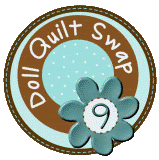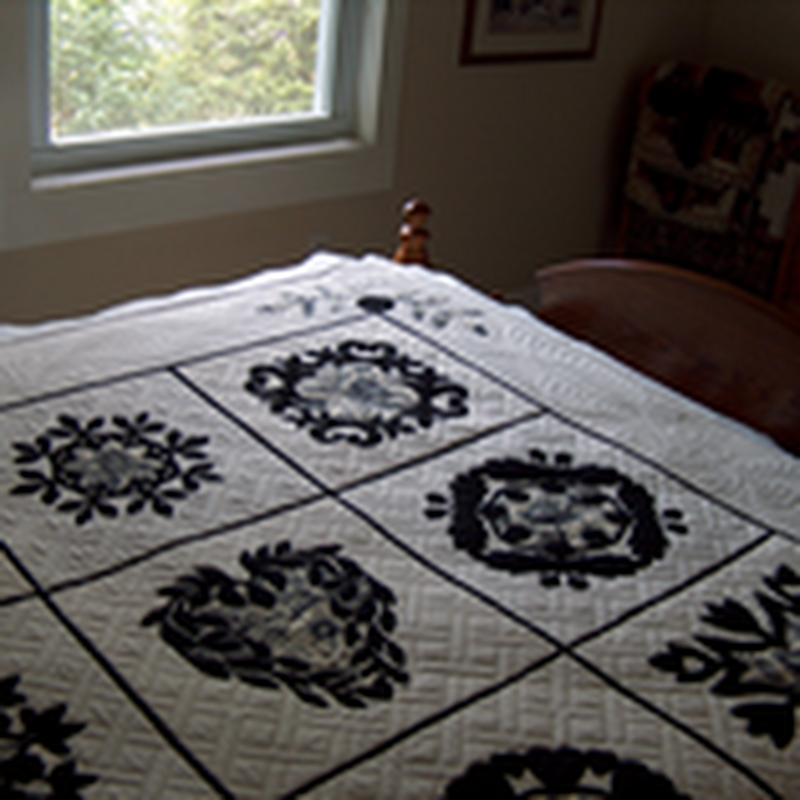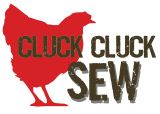We had a great few days of warm, sunny weather and now I have enough strawberries for jam (I usually do a triple or more recipe at a time) and well, I've got rhubarb. Kind of meant to be, don't you think?
 |
| Look at those juicy berries all cut up--yum! |
Warning: This is a long and detailed post, made so deliberately, so as to guide jam-making newbies along. It really is a simple process! (You should also know that what I call jam is actually probably a preserve because I still have some fruit chunks intact at the end--but, you can call it whatever you want!)
So here's what equipment you'll need (besides a stove top with at least two burners, you can do it with one, but its a real pain in the neck):
- water bath canner or really big stock pot with lid (the enamel canner is usually cheaper and wider so you can fit more jars in at a time)
- pint or half pint jars, cleaned and sterilized
- rings and lids to fit jars, cleaned and sterilized
- magnet stick (really helps to get the lids out of the boiling water)
- small saucepan
- funnel with a good sized opening
- paper towel or other clean, lint-free cloth for wiping jar rims
- jar tongs
- knife--you'll be cutting the strawberries and rhubarb
- large stock pot for cooking jam in (large batch) or for a small batch a smaller pan
- wooden spoon for stirring jam
- measuring spoons and cups (I find a 2 cup or larger measuring cup is helpful)
- a couple of towels to set hot jars on and to cover them up
- water
- 12 cups chopped ripe strawberries, chopped/cut into 1/2 inch
- 6 cups chopped unripe strawberries, chopped/cut into 1/2 inch
- 18 cups chopped rhubarb, chopped into piece 1/4 inch to 1/2 inch thick
- 2 1/4 cups lemon juice
- 24 cups sugar (more if you like your jam really sweet or if your strawberries aren't as sweet)
I was able to get 12 pints, 13 half-pints and one 4 ounce jar out of the large batch. There will be a slight variation depending on how generous your measurements are, how much sugar you add, etc. But you'll be pretty close to this. You can also use larger jars, I just like small jam jars so I can rotate more frequently, and luckily, that's what I had on hand.
Small batch ingredients:
- 3 cups ripe chopped strawberries
- 1 1/2 cups unripe chopped strawberries (You can round this to an even 2 cups if you want.)
- 4 1/2 cups chopped rhubarb
- 1/2 cup + 1 TB lemon juice
- 6 cups sugar (plus extra to adjust for taste)
No, there is no powdered pectin in this recipe--honest, I didn't forget it! That's what the unripened strawberries (these are the ones that are white or barely turning a blush of red) are for...natural pectin.
 |
| Pretty cool tip there, right? I was a bit shy on unripe ones, so I threw in some barely ripe ones to round it out. You can do this, but be warned, you're jam might not set up completely. |
Also, that seems like a lot of sugar, but it's actually half the amount that a similar Ball recipe that uses powdered pectin calls for. That's because pectin adds a bit of tartness to the jam that must be compensated for. Also, I don't like overly sweet jam--I'm going to all this effort for ripe yummy fruit, I want to taste it! But, you should have extra sugar on hand in case your fruit isn't as sweet or you decide the rhubarb makes it too tart.
 |
| Here's my rhubarb all chopped--we have a variety that never goes fully red, so we get a kind of Christmas look! |
I also have, in the past, used natural sugar alternatives such as honey, stevia and fruit juice concentrate. Each can be successful with a bit of experimentation. Also, some people like to add some red food coloring to brighten their rhubarb preserves, I think the strawberries add enough color and who needs more dyes in their food anyway?
If you don't have a long set of time for making jam, go ahead and chop the fruit up and put it in the stock pot--don't stir. Cover and refrigerate. Allow to come to room temperature (approximately) prior to cooking. (This is what I did this round.)
Jam Time
So, let's start. The instructions will be for the large batch, but the procedure is the same for the small, just alter the measurements and times will be shorter for cooking. Have all your equipment gathered and jars, rings and lids clean and sterile. (To sterilize the lids, use the sauce pan with water. Throw in the lids and bring to a rolling boil for 1 minute. Leave in the water until you are ready to add each to a jar.)
Wash your produce off, no need to add dirt to the mix, and remove leaves and hulls. Chop up your strawberries and measure as you go. Jam making is not rocket science, if you have a little extra, just throw it in. I tend to be generous with my strawberry measurements, because, well, I really love strawberries. Throw them in the large stock pot. (Your stove top isn't on at this point.)
Once you have everything chopped and in the stock pot, add the lemon juice and give it a good stir to mix it altogether.
 |
| Give it a nice stir to get the fruit and lemon juice mixed. |
Go ahead and turn on the stove to a medium low. Now, add in half the sugar, two cups at a time, stirring well to dissolve and mix all the sugar. From now on, stir frequently to help keep the sugar from scorching and to help the fruit mush up a bit. In between stirrings, go ahead and fill your water bath canner with around 6 inches of water.
 |
| As you add the sugar and stir, the juice starts to form. The ripe berries will start to break down to form a good base for your jam. |
As you stir, the fruit will begin to break down and juice will form. Turn the heat up to medium. Go ahead and add the rest of the sugar, 2 cups at a time, stirring between additions. If the jam starts bubbling a lot, just turn the heat down a bit, until you've got all the sugar in, then return it to medium. This next part takes a bit with a large batch, but be patient because you want the rhubarb and unripe berries to cook into a softened state. Just keep stirring! (Music, good conversation, etc. help to pass the time.)
 |
| You can see the foam starting to form. Just keep stirring it back in--at this point it isn't enough to worry about. |
The jam will cook down and you may see a bit of "foam" on the top, you can skim this off if it becomes a large amount. I've found, however, that when I'm not using powdered pectin there really isn't much foam and I can just stir it back in. I turn the heat up just past medium when I see the rhubarb start to soften. Using a clean spoon, take a taste test (careful it's hot!) and see if you have it sweet enough. If not, add sugar, 2 cups at a time until you like the taste.
Bring the jam to a hard boil, stirring constantly, for at least 1 minute. The jam will seem to expand during the boiling process, be careful not to get burned or to let the jam overflow! (If you find that you've underestimated your stock pot size, just scoop some out into another pan. Keep this pan heating on another burner. You can add it back in at the end when the boiling stops.)
After a minute, turn off the heat. Keep stirring until the jam subsides a bit. Carefully, remove the pot from the burner to where you plan on filling the jars. (For me, this is an easy lift/slide onto a hot pad on the counter right next to the stove--the pot is very hot and quite heavy, don't take chances with spilling.)
Now, put the water bath canner on a large burner and turn on to medium heat, so the water can begin heating up. Get your jars, rings, lids (still in the sauce pot), funnel, magnetic stick (or tongs to fish out lids), moistened paper towel and a scoop for transferring jam to jars (I use a large measuring cup). I also like a towel to grip the jars with when tightening on the rings, so that I don't burn my fingers.
Put the funnel in the jar and pour in jam. Leave 1/4 to 1/2 inch headspace. (For newbies, this just means you want to fill the jar to about 1/2 inch of the top.) My canner is around 24 ounces and fits seven pint jars at a time, so I fill the first seven pints, carefully wipe any spills of the rims and sides, add a lid and ring (screw on finger tight, don't over tighten--it's just there to hold the lid in place and protect the rim from chipping, too tight can cause breaking). Place in the canner. I like to start with the center and then add jars in a balanced manner until filled. You don't need the metal rack, but if you have one and are using it, alternating sides that you add jars can help keep it from tipping or collapsing. (Yeah, ask me how I know.) Leave about 1/2 inch between jars. When the canner is full, cover with the lid and turn the stove to almost medium high.
While waiting for the water to boil, I go ahead and fill the other jars, wipe rims, add lids and rings. These extras I place in about 4 inches of warm water (to keep the jars and jam from cooling) in other pans. Not a lot of extra pans--stopper the sink and add some hot water, place the jars in the sink. I started doing this a few years ago when I got tired of trying to keep things from overcooking while waiting for the chance to bottle and process them. I've found that I can get done faster and because the jars and jam are already warmed up, I don't have to wait for water to cool down completely (or get dumped out so cool water can be put in) before adding them to the canner for processing.
When the canner water reaches a rolling boil, allow it to boil for a full ten minutes. After ten minutes, turn off the heat, remove the lid and allow to sit for 5 minutes. Carefully remove jars using jar tongs and place on a towel. (I also hold a thick towel underneath while transferring them to the cooling counter, just in case the tongs were to slip.) When all jars are on the towel, cover with another towel. Place the next run of jars into the canner and turn the heat back on, cover and repeat the boiling process. Just keep going until you're done.
When I start getting to the last few jars, I try to make sure that I have at least four jars in each run to keep them upright and balanced. Allow all the jars to cool while covered with a towel. You'll hear a popping sound every now and then--that is OKAY!** The sound is simply the jar lid sealing, and that's a good thing! Completely cooling takes hours, so go ahead and clean up and enjoy some free time--you made jam!!
 |
| Just a little fun in Photoshop! Remember, it may be work, but that doesn't mean you can't enjoy the process and, even better, the results! |
**If you have any jars that just won't seal after processing, you can do one of two things. First option, replace the lid and reprocess. Option two, let it cool, store in the refrigerator and enjoy. If it's just one jar, I usually go with Option 2. Why not?
I should note, sometimes I underestimate how much unripe berries I need or for some reason the jam just doesn't set up right (I've tried some "natural" brands of pectin that just didn't work). No worries, just use your more liquid-y jam as a topping (like a chunky syrup) for waffles, pancakes, french toast or ice cream! That's a mistake you won't mind living with, haha!






































No comments:
Post a Comment